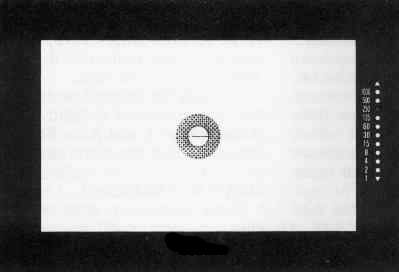

X-7
(1980) The XG-1 was a simple camera, but it was still more camera than many people needed. Minolta found a few ways to make a more streamlined camera, and the X-7 was born. It was the first camera in the XG body style not to be designated an XG. True, they couldn't call it the XG-1, so what else could they do? How about an XG-0? Anyway, the X-7 was designed as an auto-exposure-only camera. The option for manual exposure was completely removed, but most of the other features remained the same as the XG-SE. The shutter speed dial is redesigned so that there are no individual speed settings. The X-7 still had a +/- 2 EV compensation dial, so there was some ability to adjust the exposure, but the settings are moved from the camera body and placed directly onto the shutter speed dial. The dial also retains the X and B settings, so that electronic flash can be used with non-X units (the camera automatically sets the shutter speed to X with X-style flash units), and time exposures can be taken.
The viewfinder information also stayed the same as the
XG-SE.

For some reason, Minolta decided to make some cosmetic changes to the top plate of the X-7. The XG-9 had introduced a slightly modified body style to the XG series. It's hard to notice the difference, but the top plate on the earlier XG cameras tilted inward slightly. The X-7 used this new XG-9 body style in which the plate is much straighter, but made several other changes, as well. For example, the ON-OFF switch on no longer on a separate, black plate, but on a new raised section of the camera body. The rewind crank now is black, and the ISO dial is milled instead of having an adjusting tab. They did the same sort of thing with the shutter speed dial. It is, of course, missing the individual shutter speed numbers, but the dial is now a finer-milled chrome, instead of black, and the release button is now square instead of round. Seems like a bit of expense for a cheaper camera!
But Minolta didn't stop there. On the X-7, if the exposure fell below 1/60, the camera beeped to warn the photographer of the slow speed -- even though it is displayed in the viewfinder. This was the first time this feature was used on a Minolta camera, but it showed up on several later models as well. You can tell if a camera has this feature by the tiny "vents" on the front of the pentaprism. Surprisingly, the X-7 still retained the motor-drive option -- a feature the target audience was not likely to use.
There were actually two versions of the X-7, varying over time. The model is not inscribed on the camera.


The X-7 was an attempt to compete with the all-automatic exposure offerings from other manufacturers, like the Pentax MV of 1979. For many people, the X-7 is the perfect camera -- simple, clean, and automatic. At the same time as the X-7, Minolta sold the even simpler XG-A. For a comparative look at the major features of the X-7 models, check out MINMAN's SLR table -- the world's most complete!
RETURN TO THE MANUAL
MINOLTA HOME PAGE We didin't want to do this, but since other websites
have been stealing our stuff, we have no alternative but to state:
COPYRIGHT@1995-2023 by Joe McGloin.
All Rights Reserved. The material on this website is protected by US Federal copyright laws. It cannot be copied or used in any manner without specific approval from the owner.
The material on this website is protected by US Federal copyright laws. It cannot be copied or used in any manner without specific approval from the owner.